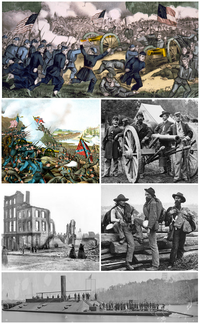
Photo from wikipedia
The bibliography on the Spanish Civil War is almost unattainable, but the matter continues to elicit such interest that it remains open to new historiographic trends. For example, the ‘classic’… Click to show full abstract
The bibliography on the Spanish Civil War is almost unattainable, but the matter continues to elicit such interest that it remains open to new historiographic trends. For example, the ‘classic’ military history of the conflict, cultivated prominently in recent years by Gabriel Cardona, Jorge Martínez Reverte and Anthony Beevor, does not renounce the microhistory or cultural perspective. These constitute the theoretical framework of the New Military History and its corollary the New Combat History, which combine philological, anthropological, psychological and historiographical perspectives to various degrees. In the specific field of the war experiences pioneered by George L. Mosse, the concepts of brutalisation, barbarisation and demodernisation of military operations, coined by Omer Bartov to describe the particularities of the Eastern campaign during the Second World War, are being used by Spanish historians dedicated to the study of the violence and atrocities of the civil war and post-war. Focusing on the field of political history, government management or diplomacy has been studied almost exhaustively, but this is not the case for the principal phenomenon of political violence in the 1930s in Europe, namely paramilitarisation. It is surprising that the latest studies on the issue at the European level (Robert Gerwarth, John Horne, Chris Millington and Kevin Passmore) do not include any essays on the enormous incidence of paramilitary violence in Spain before, during and after the civil war.
Journal Title: Contemporary European History
Year Published: 2020
Link to full text (if available)
Share on Social Media: Sign Up to like & get
recommendations!